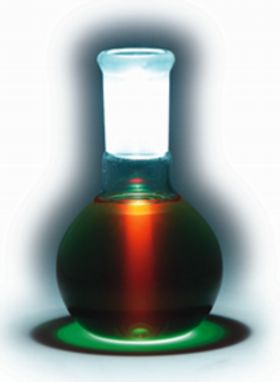Photosynthesis I
Photosynthesis is a marvel of nature that can be summarized by the equation:
 Roger Hangarter and Dennis DeHart
Roger Hangarter and Dennis DeHart
Plants contain chlorophyll, the green pigment that traps the light energy of the sun so it can be converted into chemical form. Photosynthesis requires the presence of chlorophyll, carbon dioxide, and water to produce sugars, with oxygen being given off as a waste product. Sugar is used to fuel metabolism and growth or is stored for future use. When we eat seeds, fruits, or vegetables, we’re essentially eating the sun’s energy.
Our everyday experience tells us that things wear out and decomposition follows death. However, the earth is a closed system, and its only source of energy to combat decay and death is the sun. Only plants and other chlorophyll-containing organisms can directly convert sunlight to chemical forms of energy and thus fuel the building and maintenance of life. Simply put, we are totally dependent on photosynthesis—plants are not optional.
Catching the Light is a demonstration of photosynthesis in action. Photosynthesis begins when light is absorbed by chlorophyll. The flask contains chlorophyll extracted from spinach leaves. When a beam of light passes through the extract, the chlorophyll absorbs this energy. But because the chlorophyll in the flask has been isolated from the plant, energy cannot be converted and stored as sugar. Instead it is released as heat and red fluorescence.